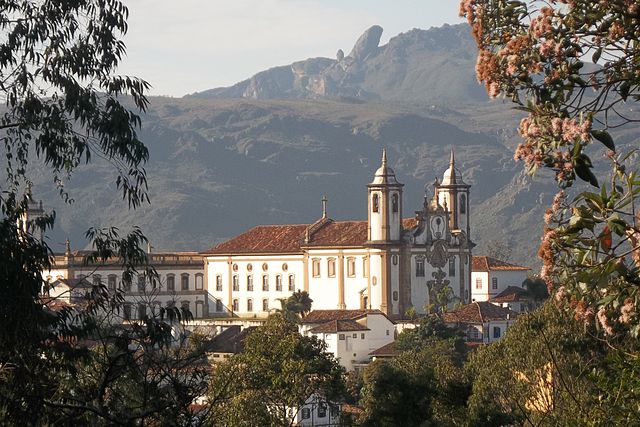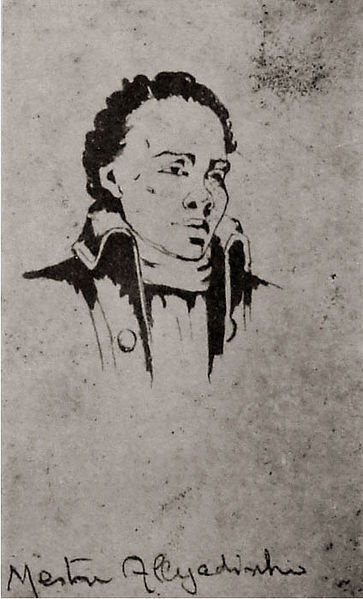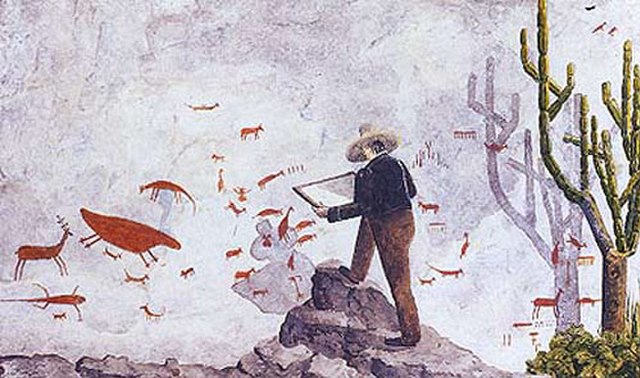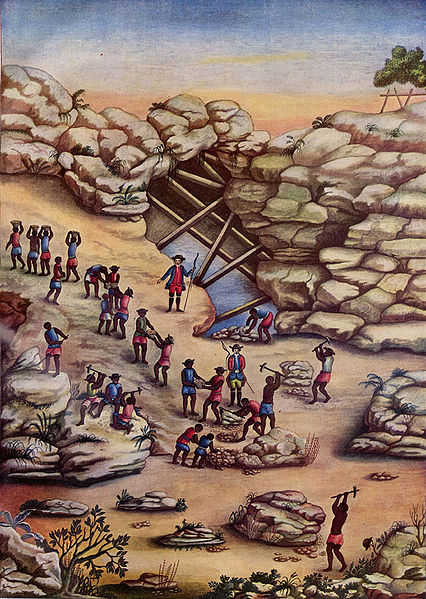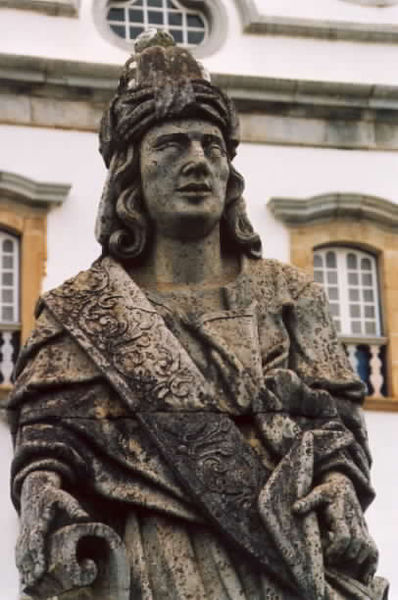Antônio Francisco Lisboa, better known as Aleijadinho, was a sculptor, carver and architect of Colonial Brazil, noted for his works on and in various churches of Brazil. With a style related to Baroque and Rococo, Aleijadinho is considered almost by consensus as the greatest exponent of colonial art in Brazil by Brazilian critics and, surpassing Brazilian borders, for some foreign scholars he is the greatest name of Baroque in the Americas.
View of Ouro Preto, with the Church of Our Lady of Mount Carmel, partly designed by Aleijadinho, in the background
Receipt signed by Aleijadinho when he received payment for the work on the Twelve Prophets
Aleijadinho in Vila Rica, 1898–1904, romantic reconstruction of an imaginary scene in the artist's life, by Henrique Bernardelli. Reproduction in Kósmos magazine of a lost screen
Imaginary portrait of Aleijadinho, by Henrique Bernardelli
Minas Gerais is one of the 27 federative units of Brazil, being the fourth largest state by area and the second largest in number of inhabitants with a population of 20,539,989 according to the 2022 census. Located in the Southeast Region of the country, it is limited to south and southwest with São Paulo; Mato Grosso do Sul to the west; Goiás and the Federal District to the northwest; Bahia to the north and northeast; Espírito Santo to the east; and Rio de Janeiro to the southeast. The state's capital and largest city, Belo Horizonte, is a major urban and finance center in Brazil, being the sixth most populous municipality in the country while its metropolitan area ranks as the third largest in Brazil with just over 5.8 million inhabitants, after those of São Paulo and Rio de Janeiro. Minas Gerais' territory is subdivided into 853 municipalities, the largest number among Brazilian states.
Lund copying rock paintings in a cave in Lagoa Santa, c. 1840
Borba Gato, painting by Rodolfo Amoedo, 1929
Diamond mining, by Carlos Julião, c. 1770
Baruch, 18th century Baroque sculpture, by Aleijadinho

